Travel
Slovenia has a short coastline, far overshadowed by its neighbour to the south. But the little access to the Adriatic that does exist is an attractive and rather varied place, from the glitz, casinos and marina of Portorož to the green tranquillity of Debeli rtič (“the fat little cape”), on the Ankaran peninsula and just a short walk (or swim) from Italy.
It was declared a landscape park in June 2018, and while the area already has several nature reserves, on land and at sea, this one is a welcome addition to keeping part of the coast in a relatively pristine condition. A new website, in Slovene, Italian and English, has been set up to promote Debeli rtič and teach people how to behave when visiting.
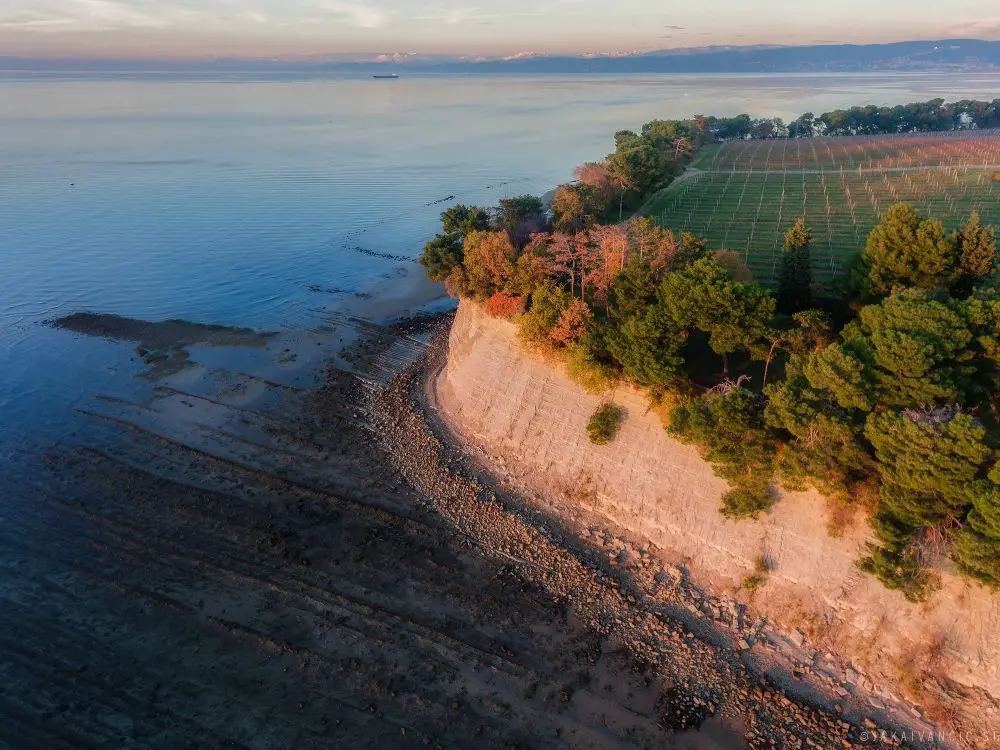
©Jaka Ivančič
The natural attractions of the area include flysche cliffs, with the same rock creating a shallow seabed that gives rise to a high level of biodiversity, with rare and endangered animals such as coral loaf, fan mussel, and long-snouted seahorse. Slightly further inland the landscape park is home to more than 200 different plant species, as well as vineyards and small area of oak forest, which once covered the whole peninsula. Slightly less picturesque, but no less valuable in terms of ecosystems, there’s the soft, wet land of St Nicholas Mediterranean salt meadow, with much for botanists and naturalists to enjoy, as well as anyone else who likes a relaxing walk in the sea air.
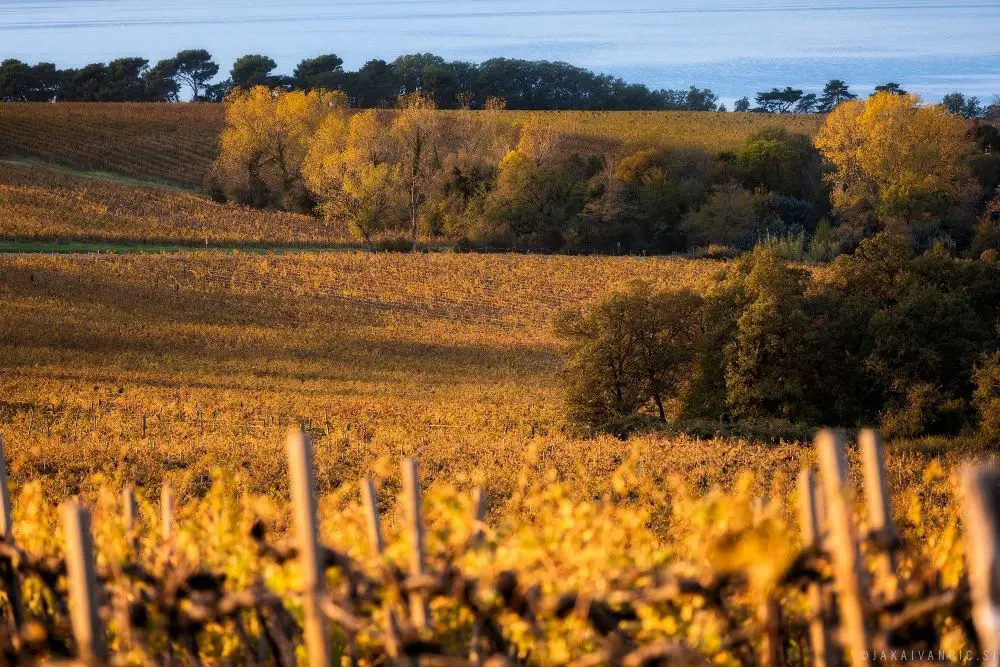
©Jaka Ivančic
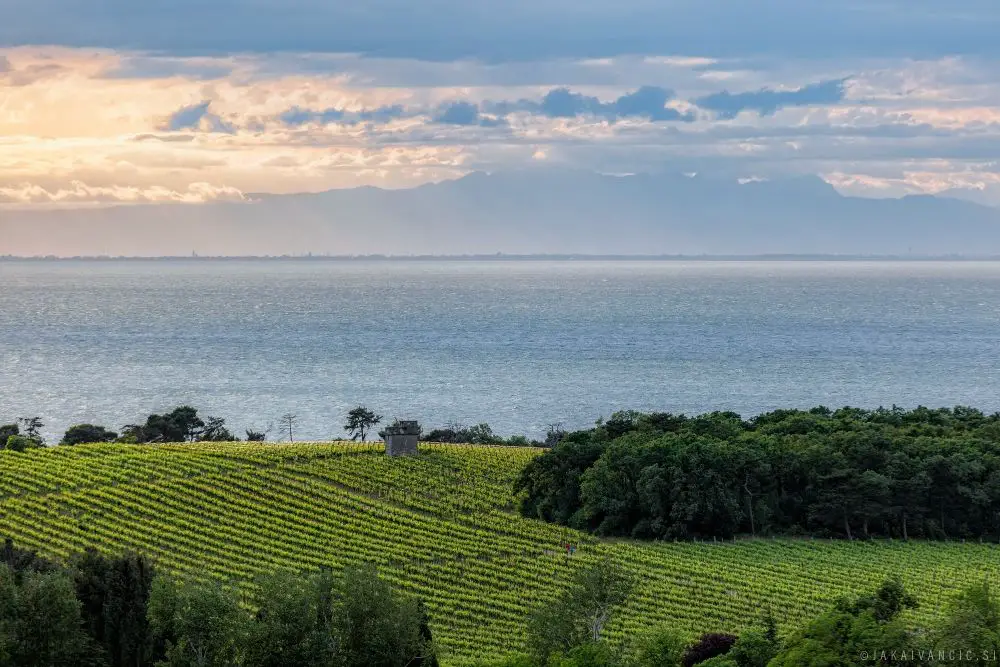
©Jaka Ivančic
You can visit the website to learn more about the place here, and see more pictures by the parks first ambasador, the photographer Jaka Ivančic, here.
Related: Ljubljana Day Trips - the coast
STA, 8 January 2019 - Slovenian ski resorts are fairly happy with the way the season has been running so far despite what has been a serious lack of natural snow. Some have however been struggling, in particular the two high-altitude resorts Kanin and Vogel in the north-west, which do not have major artificial snow-making capabilities.
"Considering the conditions, we're relatively content," the head of the association of ski resort operators Ernest Kovač told the STA.
He explained that visitor numbers are comparable to last year's in most major skiing centres in the country owing to what was a relatively early activation of snow cannons.
The number of skiers is even up slightly at some of the resorts with artificial snow-making capabilities, but no centre has so far been able to open all the available ski lifts. Rogla in the north-east has come closest, having activated almost all of its slopes.
Things are more problematic at smaller centres as well as at Vogel, the ski resort above Lake Bohinj, and Kanin, Slovenia's highest-altitude ski resort.
Located on the Italian border and looking for a boost after it was reopened in late 2016, Kanin has seen a 25% to 30% drop compared to the 2017/2018 season. Situated at an altitude of over 2,000 metres, the centre has borrowed a snow cannon to start making artificial snow for the first time in its history.
Vogel has seen 32 skiing days this season, down almost 50% compared to last year. The Vogel cable car has transported 7,300 people this season, which compares to 27,000 at this point last year. The centre's representatives however remain optimistic, arguing some snow and a few sunny days could still turn things around completely.
Related: Opening Dates and What’s New at Slovenia’s Ski Resorts, 2018/19
January 03, 2019 - Ex-Yu Aviation has a report that details how the Slovenian government and Ljubljana Airport have worked over the last few years, and are continuing to work, to attract nonstop flights to the Middle East. The site quotes Zmago Skobir, the General Manager of Fraport Slovenia, the firm that operates Jože Pučnik Airport, as saying last week: "We are working closely with the Ministry for Economic Development and Technology concerning flights to the Arab world. We also have good cooperation with the Slovenian National Tourism Board, with which we are jointly identifying markets of interest and coordinating sales and marketing activities… The more direct routes, the more investors there will be, as well as more tourists. So, the Gulf is our priority but we have very strong competition for these markets in Zagreb, Belgrade, Venice and Vienna".
In recent years both Flydubai and Qatar Airways have expressed interest in flights to and from Ljubljana, while the airport has also held discussions with Emirates, Etihad Airways and Air Arabia, although without any deals being signed. The story, which can be read in full here, ends by noting that the country which supplies the most visitors to Slovenia from the Gulf region is Saudi Arabia, followed by the United Arab Emirates and Kuwait.
STA, 19 December 2018 - Slovenia's tourism industry has had another record year, with tourist nights expected to top 15.2 million by the end of 2018, up from last year's 12.6 million. Still, some challenges remain to be addressed, including the shortage of staff and low pay as well as the consolidation of state-owned tourism companies.
Slovenia now a trendy destination
Slovenia has regularly made it to various lists of destinations worth exploring which are compiled by specialist media abroad, and the country's promotional campaigns have regularly won awards at major international tourism events.
"Slovenia is not only a recognisable destination, it is now a trendy destination," is how Slovenian Tourist Board (STO) director Maja Pak has recently summed the country's position in global tourism.
Tourism revenue, a key indicator of tourism performance, is growing, rising by 11.6% to EUR 2.12m in the first nine months of the year.
While the 2017 tourist nights figures were exceeded already in October, Slovenia expects to record over 5.6 million tourist arrivals in 2018, up from 4.95 million last year.
The number of foreign guests is to reach 4.2 million by the end of the year, and they are expected to generate almost 11 million tourist nights, STO data shows.
The growth is thus considerably more robust that in the EU or in the world.
Hotels in the black, differences in ownership
Following the crisis, hotels are back in the black, yet Economy Minister Zdravko Počivalšek, whose ministry is in charge of tourism, is not entirely happy yet.
He believes the relatively low value added should be blamed on the fact that as many as 40% of hotels are in state ownership.
He thus insists on their restructuring as envisaged in the 2017-2021 strategy on sustainable development of Slovenian tourism.
Once they are brought under one roof, preferably under Slovenian Sovereign Holding, they should be consolidated to secure a higher value added and then gradually sold.
He believes there is room for no more than two to three major groups in the sector, and is confident the incumbent government will complete the restructuring process.
However, Počivalšek has admitted on several occasions that this will not be easy since not all stakeholders have the same view on the issue.
That even state stakeholders have different interests in the sector has been recently proven by the fact that several different state companies and funds bid for six hotels on the coast which are being sold by Istrabenz Turizem.
To achieve a higher value added, Slovenian tourism also needs to develop new innovative products, which implies investment into infrastructure.
To encourage the investment cycle, the ministry and SID Bank have launched a EUR 160m loan scheme for new accommodation facilities. Počivalšek has said there is much interest.
Higher tourist tax, further legislative changes in the making
By passing changes to the law on encouraging tourism development, the government enabled municipalities to raise tourist fee and introduce a new tax to secure more funds for tourism promotion.
The tourist free was capped at EUR 2.5 per person a night, but is still set by individual municipalities.
The new tax meanwhile amounts to 25% of the tourist fee and will be charged as of 2019 as a a new source of STO funds, bringing it an estimated EUR 4.7m a year.
Many municipalities have opted to raise the tourist fee, with several popular destinations such as Ljubljana, Piran and Bled raising it to the maximum.
The ministry has assessed the measure will annually bring all Slovenian municipalities additional EUR 6.9m.
For 2019, the ministry is planning further legislative changes to relax the rules on the hospitality sector and mountain guides.
New rules will also be introduced governing tourist accommodation facilities which introduce internationally-comparable Hotelstars standards.
Owners of accommodation facilities have until 1 April to adjust to a unified set of criteria to classify accommodation facilities.
New collective bargaining agreement, pay still low
Staff is one of the most burning issues in hospitality and tourism, with employers having a hard time finding quality staff in Slovenia or in the broader region.
This is mainly due to difficult working conditions and low pay.
A new collective bargaining agreement was signed in August, bringing higher wages for workers receiving the lowest pay, a higher annual holiday allowance of EUR 1,000 and changes to overtime work.
Nevertheless, hospitality and tourism trade unions have already announced their plan to push for fresh pay talks.
Feel Slovenia your way
This year was one of the most intensive and successful years for Slovenia in terms of marketing as well. The STO continued with its digital campaign Slovenia - Make New Memories this time on 17 markets, including in the US and Canada for the first time.
Its main promotional slogan "Slovenia - Green. Active. Healthy." will be replaced with "I Feel Slovenia. My Way." in 2019.
However, just like in 2018, culture will remain in the focus of the STO's promotional campaigns, to be replaced by gastronomy in 2020 and 2021.
There’s perhaps no phrase more ripe for retirement in writing about Slovenia than “hidden gem”, especially when it comes to the places that are usually mentioned in travel articles introducing the sunny side of the Alps to a wider audience. Many of these simply detail already well-visited locations, like Ljubljana’s Old Town, Bled, Piran, Postojna, and so on, with many of the, eh, more obscure jewels remaining unpromoted.
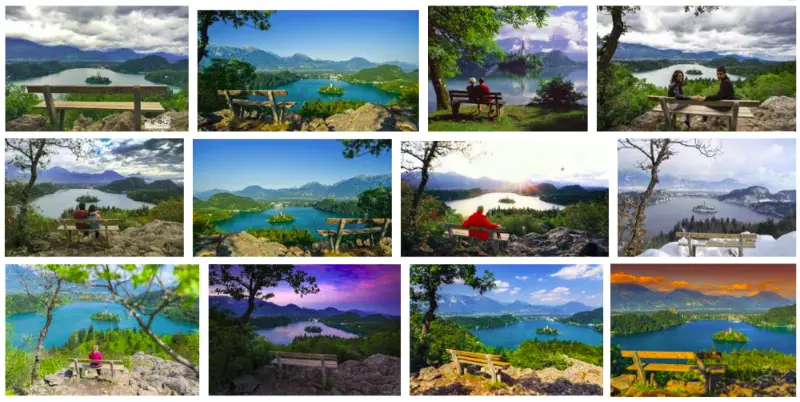
Find out how to take this picture, here
And of course, this focus on a few places means that these get put on the must-do itineraries of many visitors – for what’s a two-day trip to Slovenia without kremšnita and a hike to that bench? – and this, if nothing else, creates some logistical problems with regard to parking, overcrowding and so on, not to mention “ruining” the places for some, including local residents with no direct interest in the tourist industry.
To this end the Slovenian Tourist Board, among others, has been working to promote some of the less-trafficked locations in the country, aiming to spread the prosperity that can come with travel and tourism, extend the stays of visitors (which are still, on average, less than two days), and show more of what makes the young nation such a pleasant one, and perhaps encourage more folk to relocate or invest here.
One organisation that’s also working in this regard is the national broadcaster Radio SI, which just announced the winners of its hidden gems competition. The final list, obtained after a selection of options was put to a vote, draws more attention to 18 tourist packages and products that aim to show off the diversity and wealth of Slovenia’s of natural and cultural heritage, from historic sites to gourmet experiences, hiking tours to craft beer adventures.
The list of 18 recommendations is presented below, with a link to the main webpage at the end, while simply clicking on the name will tell you more about each offer.
1: Laško craft beer experience
5: Exploring the history, scenery and taste of Brežice
6: Hard coal and fragile glass in the Zasavje region
7: Delights of Count Blagaj’s land
8: Underground adventures in Geopark Karavanke
9: Exploring Tolmin and the remnants of the Isonzo Front
10: Mediterranean flavours of Slovenian Istria
12: Hidden treasures of Slovenj Gradec and Mislinja Valley
13: Idrija Adventure
14: Charming Slovenia Herbal glamping resort
15: Among the Herdsmen on Velika planina
16: The Valley of Kolpa’s green beauty
17: Green Adventures in the Vipava Valley
18: Getaway to the Red Planet (the Karst and Terran wine)
The full story on Radio SI can be found here
STA, 11 December 2018 - Slovenia expects to record more than 5.6 million tourist arrivals and more than 15.2 million tourist nights by the end of 2018, in what will be yet another record year. Tourism revenue is also growing, up by almost 12% to EUR 2.12m in the first nine months of the year at annual level.
"That 2018 will be a new record year is already clear. The number of tourist nights from 2017 was exceeded as early as the end of October," Economy Minister Zdravko Počivalšek said at a news conference in Ljubljana on Tuesday.
He attributed the good results to cooperation. "Measures by the ministry and the Slovenian Tourist Board (STO) have not been that well harmonised in a long time, tourism companies and destinations have not been that responsive and creative in a long time."
This year's promotion has been largely based on culture, which will also be the case in 2019. STO director Maja Pak said 2018 was one of the most intensive and successful in terms of marketing.
She is also happy with the media attention abroad, stressing Slovenia had been regularly making it to lists of recommended destinations. "Slovenia is not only a recognisable destination, it is now a trendy destination."
Minister Počivalšek (@PocivalsekZ): Turizem je ena najbolj interdisciplinarnih in multiplikativnih dejavnosti, ki je tesno povezana tudi s kulturo.
— Slovenia Tourism (@tourism_slo) December 11, 2018
?3 ključna področja za #aktivirajmovrednost➡️
?prestrukturiranje
?kreditna shema
?prenova zakonodaje pic.twitter.com/TZsW3rUyJP
Slovenian food and drink the next focus of tourism efforts, along with some restructuring
Looking ahead, the STO said it would be all about gastronomy in 2020 and 2021 as Slovenia had been chosen the European Region of Gastronomy 2021 and influential French restaurant guide Gault & Millau published a Slovenian edition of its high-profile restaurant guide.
The minister announced his ministry will be working on three priorities next year: restructuring of state-owned tourism companies, a loan scheme worth EUR 160m and legislation simplification.
Počivalšek insists on the restructuring in line with the national asset management strategy, which envisages bringing all the companies under the roof of Slovenian Sovereign Holding, improving their management to secure a higher added value and then privatising them.
Noting "things were going in the desired direction", he is convinced the project will be successfully carried out, including the privatisation already under this government.
He insists the companies must be sold to good owners with a development vision.
"In all sectors, I promote prudent privatisation to the benefit of a company which is on sale, to the benefit of Slovenia, not to the benefit of the seller."
The minister is open as to who the new owners would be, saying the hotels could be sold to domestic or foreign companies, or to asset management funds.
Počivalšek also said there was a lot of interest in the loan scheme, so he believes the funds will be well used to increase the number of accommodation facilities.
State Secretary Eva Štravs Podlogar said the ministry would continue to simplify legislation, taking on the hospitality law and the law on mountain guides.
Related: All our stories tagged “tourism” are here
STA, 9 December 2018 - The lakeside town of Bled, one of Slovenia's top tourism destinations, is set to see another boom year in tourism, having broken last year's record as early as October this year.
Visitors to the Alpine resort have spent over one million nights in one of its accommodation facilities in the first ten months of the year after the one millionth mark was broken for the first time ever at the end of last year.
It was British visitors who spent most nights at Bled (177,000), followed by Germans (92,000) and visitors from the United States (67,000) and Italy (65,000).
Since many Italians tend to spend their Christmas and New Year holidays in Bled, the local tourism board expects they will overtake the Americans as the third largest group of visitors in terms of nights.
Tourism statistics are expected to improve further because Bled has also attracted many of the biathlon fans and athletes competing at the Biathlon World Cup opener on Pokljuka just above Bled this week.
Related: Photo sports - that bench overlooking Lake Bled

Photo: Screenshot of Google Image Search
STA, 30 November 2018 - Slovenian hunters are getting older and their organisation is struggling with declining membership, which is just one of the challenges. They also oppose culling plans that they have no say in.
The Hunters' Association (Lovske zveze Slovenije) argues that the deer culling plan imposed by the Agriculture Ministry is excessive considering the size of the deer population.
The association has told the STA their members are not in a position to realise the planned culling, but that they face high fines, from EUR 4,100 up per a hunting club, if they do not.
Hunters took 8,229 red deer and 41,869 roe deer from nature last year, which includes large numbers that perished due to extremely low winter temperatures.
Under the plan, hunters should have killed almost 5,000 red deer and 39,986 roe deer.
Despite the large numbers of deer and wild boars lost in last year's winter kill, the Hunters' Association says they have been instructed to implement the culling plan for this year in full.
"We cannot agree with a plan that doesn't take into account the projected deer population trends, but only by the damage done to trees by game."
Average age of hunters is now over 56
The Hunters' Association, counting 22,000 members, is worried about dwindling membership numbers. They have also had to withdraw more than 200 hunting licences for various reasons this year.
The average age of hunters is quite high, standing at over 56 at the end of 2017.
Membership is a key source of income for hunting clubs but an important source of income is hunting tourism although the clubs managing hunting grounds pay a concession fee to the state.
Foreign game hunters coming to Slovenia are interested mainly in chamois and bear, but they also hunt other large game.
Related: Slovenia's Ministry of Environment Wants Hunters to Kill 200 Bears and 11 Wolves
Hunting tourism is the principal activity of special-purpose hunting reserves. Out of 408 hunting reserves in the country, 12 are special purpose.
Ten of these are managed by the Slovenia Forest Service (SFS) and one by the Triglav National Park, while hunting clubs are responsible for sustainable game management.
Hunting tourism is available to guests from Slovenia and abroad. The guests who are not hunters need to be accompanied by a hunter with a valid hunter's licence.
It costs between €600 and 6,500 to kill a bear in Slovenia
Apart from domestic guests, it is Austrians, Germans and Italians who come to hunt in Slovenia most often.
Ljubljanski Vrh, one of the ten reserves managed by the SFS, hosted 1,900 guest hunters last year, some of them several times.
The Forest Service made over EUR 1m from hunting tourism last year.
The guest hunter will pay between 600 and 6,500 euro for killing a bear plus a daily hunting fee. A red deer trophy comes at between 215 and 5,500 euro and a roe deer trophy between 50 and 400 euro.
Ex-Yu Aviation reports that travellers to and from the UK will have new option in summer 2019, with British Airways launching a service that connects Ljubljana and Heathrow airports. The flights will run from July 15 to September 2, and will be an addition to the other regularly scheduled services between the British and Slovenian capitals, with easyJet flying out of Stanstead and Gatwick, and Wizz Air working from Luton.
Related: How to get to Ljubljana Airport from the city
The British Airways service from London Heathrow (LHR) have the flight number BA690, taking off from the UK at 17:20 and touching down at Ljubljana Airport at 20:35. From Slovenia to the UK the flight number is BA691, taking off at 21:20 and landing at 22:35. In both directions the route will be served by an Airbus A319
At the start of the year we spoke with Steve Hartley about his experience as a foreign entrepreneur in Slovenia, an Australian who runs Explorer Kids Summer Camps. Now, after another successful season and going into the winter, we spoke to him again about summer camps for children in Slovenia, and the potential that’s still there in this relatively undeveloped market in an ideal location for getting away from it all.
Summer camps are an 18$ billion industry in the US, with over 14,000 camps and 14 million children attending every year. How does that compare to the European market?
It’s a bit like comparing apples and oranges really as there are so many variables involved. Clearly though there is a much greater camping tradition in the US when compared to Europe, though does that mean camps are unpopular here?
The bottom line is that summer camps in the US are a tradition, a way of life. In many ways it’s become so engrained in popular culture that it’s just a given that children do this during their summer holidays. Well, at least those children from families that can afford to send their sons and daughters off to camp for eight weeks straight.
In saying this, it’s foolish to say that summer camps aren’t popular in Europe because they are. Just not to the same extent as in the US, nor in the same way. For example the Scouting Association is present in 40 of the 50 European countries, while there’s a large number of language-based camps found in places like the UK, Spain, France, and even Croatia. It has to be said though that Europe has a lot of ground to catch up to reach the dizzying heights of summer camps in the US.
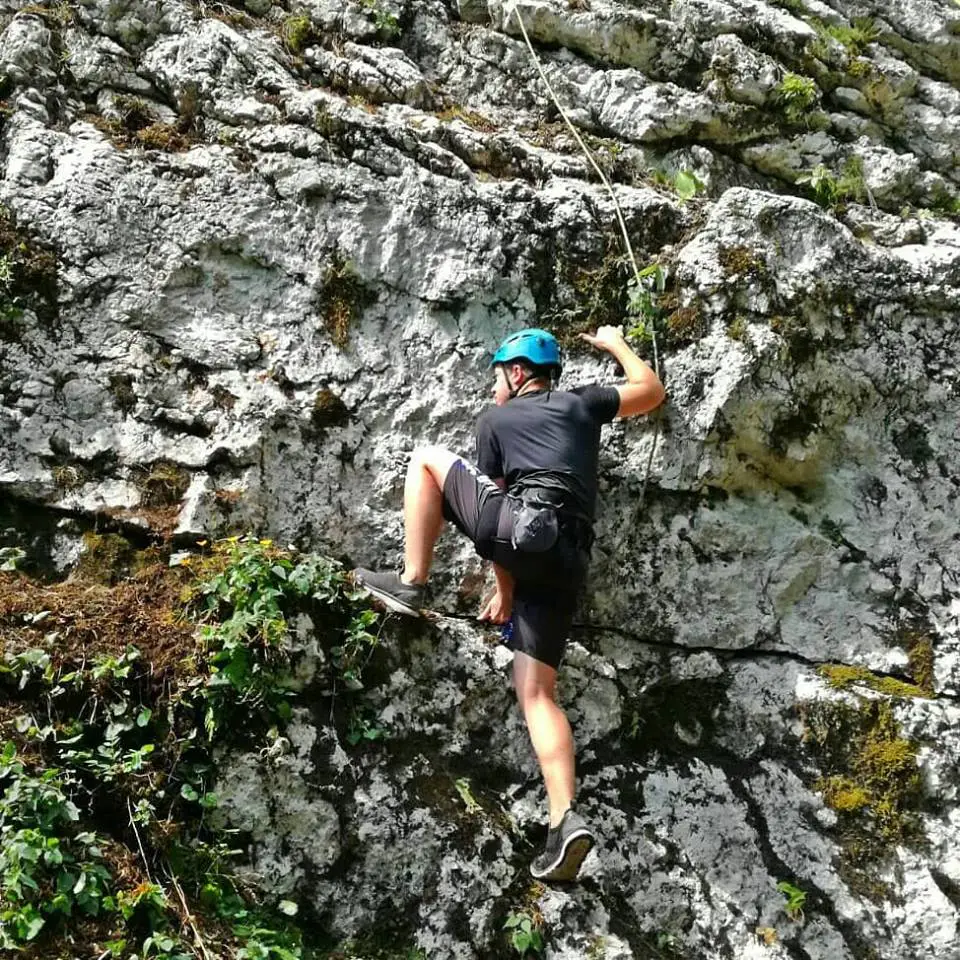
Photo: Explorer Kids Camp
What makes summer camps in the US different to those you generally find in Europe?
Looking at what those in the American camping industry say, the majority of summer camps there are far less focused on traditional education and are more centered on strengthening and developing skills, such as Emotional Intelligence, not commonly taught in the classroom. On paper they’re also much longer, ranging from four to eight weeks in length, whereas in Europe it’s not common to find camps that last longer than two weeks.
When delving further, the American Camp Association emphasizes “exposing campers to different cultures” as a key factor of US based camps, as they see this cross-cultural experience as vital for their children’s growth. Even though this is becoming more popular now in Europe, with such programs as ERASMUS and some international camps, it still isn’t a deep tradition like you see in the US.
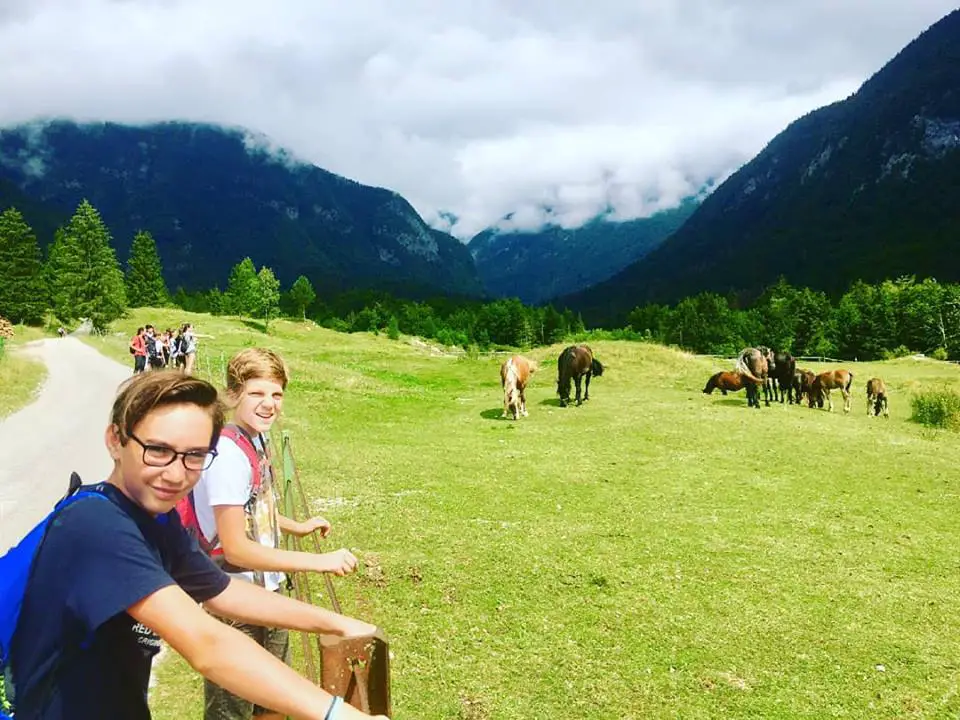
Photo: Explorer Kids Camp
They also aim to develop community skills in the campers. Many camps (the American Camp Association says over half) offer some kind of community service program, such as clean-ups or community food drives in their curricula. It ties into exposing campers to different cultures, while also building Emotional Intelligence which they deem so important to their values.
Slovenian summer camps can learn much from the American experience
One can perhaps get the biggest insight into how camps work in the US by looking at what the parents see as advantages of sending their children to camps. According to the American Camp Association the benefits for parents were reported as having a safe environment that builds self-confidence, esteem and social skills, and encourages friendships, while increasing children’s willingness to experiment and try new things.
Again, there’s a distinct focus on building Emotional Intelligence in camps in the US as it’s now widely regarded as a better indicator of success than what you find with IQ. This focus on building EQ is something that isn’t often seen in feedback from parents in Europe as a society is still much more focused on building IQ for schools and life.
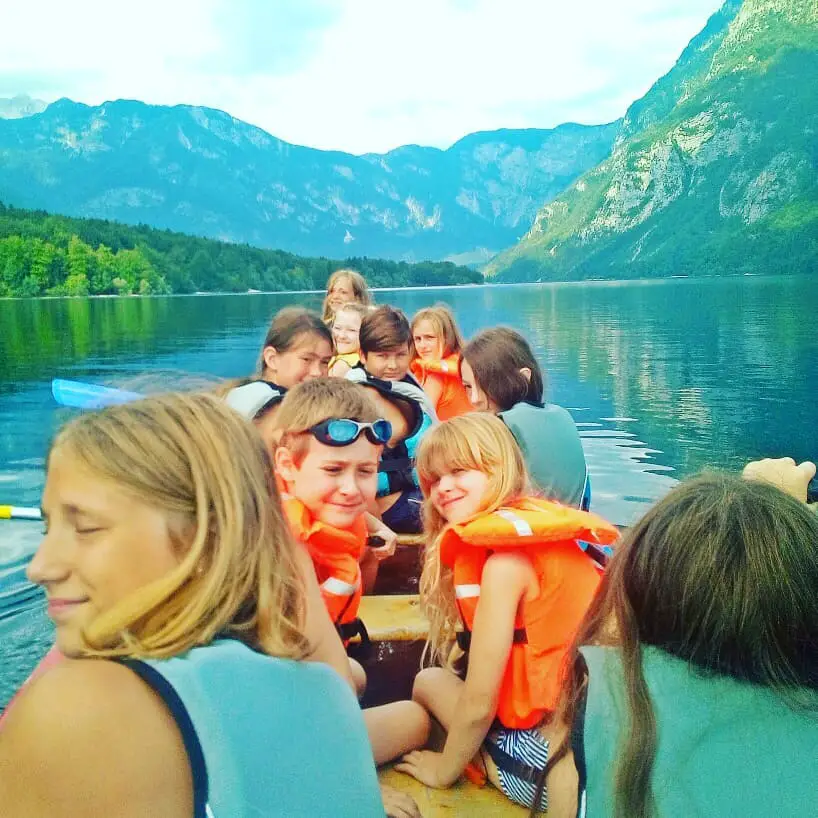
Photo: Explorer Kids Camp
You’ve been running camps in Slovenia for over 10 years. How have they evolved over that time?
Slovenia has always had a pretty rich camping history, especially when you take into account its abundance of nature and outdoor activities. Not only are the Scouts quite popular, but you also have the Taborniki which some might say is a mellow younger sister of the Scouts. Adding to that there are many specialized camps for at-risk children, language learning, and also some sport-based camps in both summer and winter. Of course, you also have your traditional school camps which are a regular part of the school curricula.
In saying all of this, the vast majority of these camps are predominately done only with Slovene children and staff, meaning there’s a lack of “exposing campers to different cultures”. Poletni Taborni was perhaps the pioneer in this field, having run international camps in Slovenia for the past 11 years, and with the recent tourist boom there’s a distinct growth in foreign children attending summer camps in Slovenia.
When compared to the traditional ‘life skill based’ US camps, that’s something that hasn’t quite caught on yet in Slovenia. One could argue that the Scouts and Taborniki are groups that teach some of these skills, although they’re still some way off what you’ll find in the States, especially when it comes to building EQ. Quite simply, when camps aren’t seen as big business, as you see in Slovenia, they tend to lack the same professionalism and day-to-day organization that you see across the Atlantic.
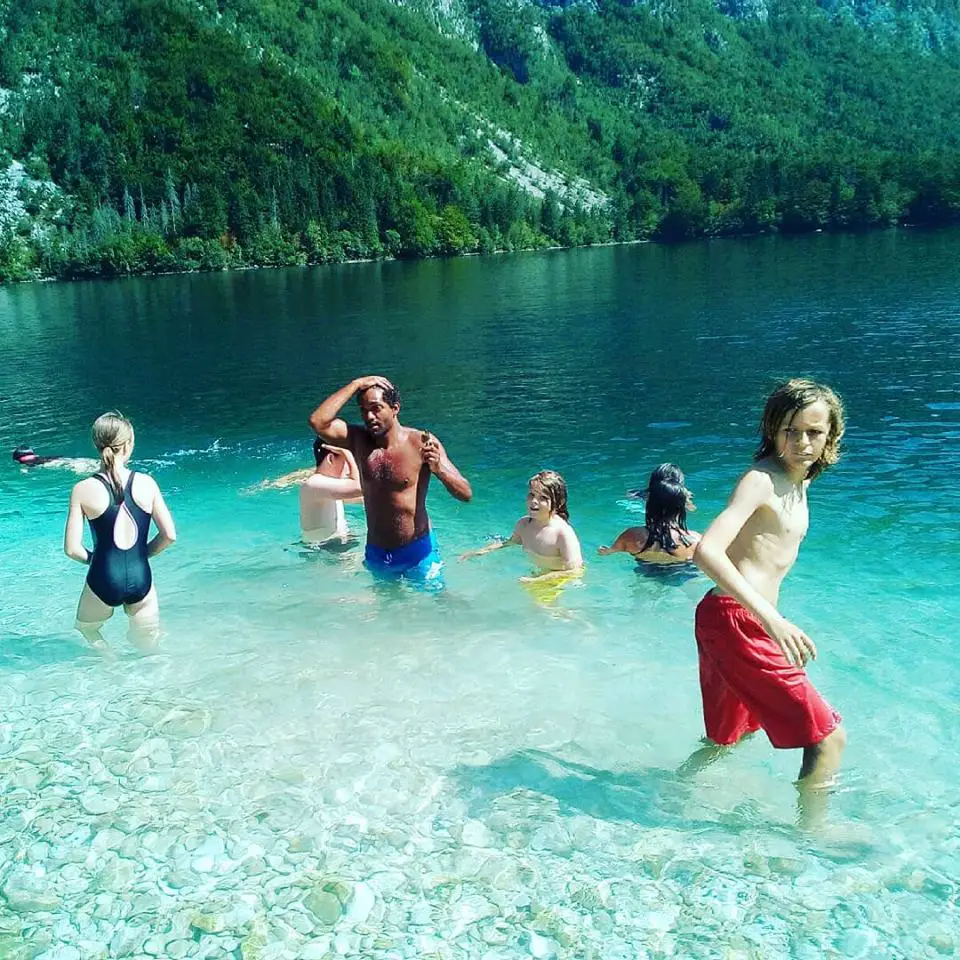
Photo: Explorer Kids Camp
You established Explorer Camps four years ago, and they have grown over 320%, with 2019 looking to be even bigger. What’s behind this success?
Identifying one clear reason behind our present success is difficult, as it’s been a combination of many different factors. Without doubt the fact we are a true international camp with children coming every year from over 18 different countries is a big draw not only within Slovenia, but also in this region. It’s something unheard of in Slovenia to have 45 children on camp, with only three Slovenes, and while the rest of the campers come from as far as Australia, China, UAE, Ireland, Russia, Latvia, Malaysia, and the US to name a few. You can then also add having the bonus of English native-speaking stuff that run 100% of the activities.
Some may point to our desire to step away from a school like atmosphere by focusing on outdoor activities that are fun and engaging as a key point. It’s definitely an amazing experience being challenged to try something you’ve never done before. However, behind this fun there’s a strong belief in building EQ amongst our camp community, whether it be during our outdoor activities, free time or even meals.
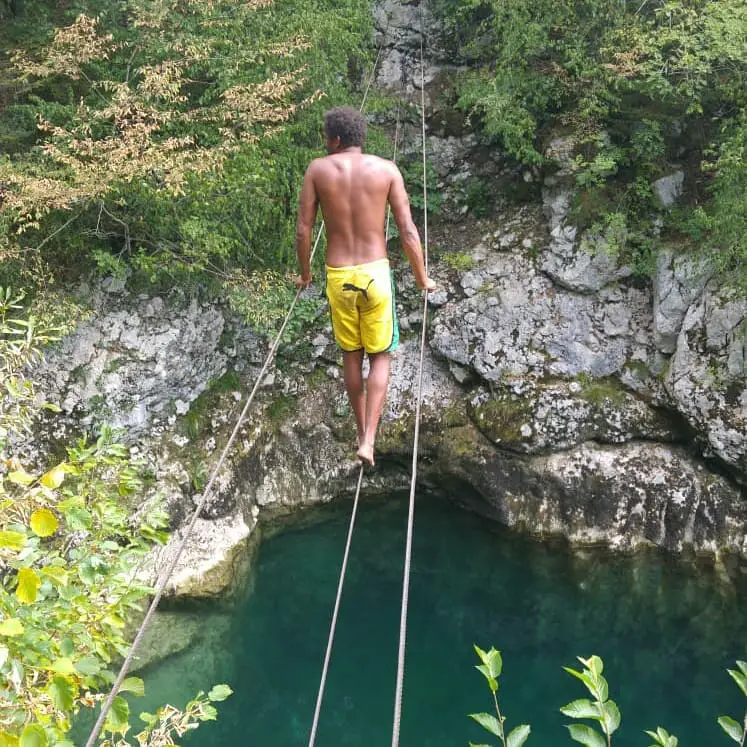
Photo: Explorer Kids Camp
You could add to this the open and caring environment we create where children can feel free to express themselves without fear of judgment as being a good reason behind their success. It’s not often campers can totally relax and enjoy just being who they are.
Counsellors are the key to a successful summer camp
Personally, the biggest factor of our success is our staff. Across the board campers repeatedly talk about the counselors and their warm, caring, and personal approach to working with them as being the biggest reason for enjoying the camps so much. It’s a unique opportunity for campers to simply be themselves, and to learn to love who they are rather than trying to be someone they’re not.
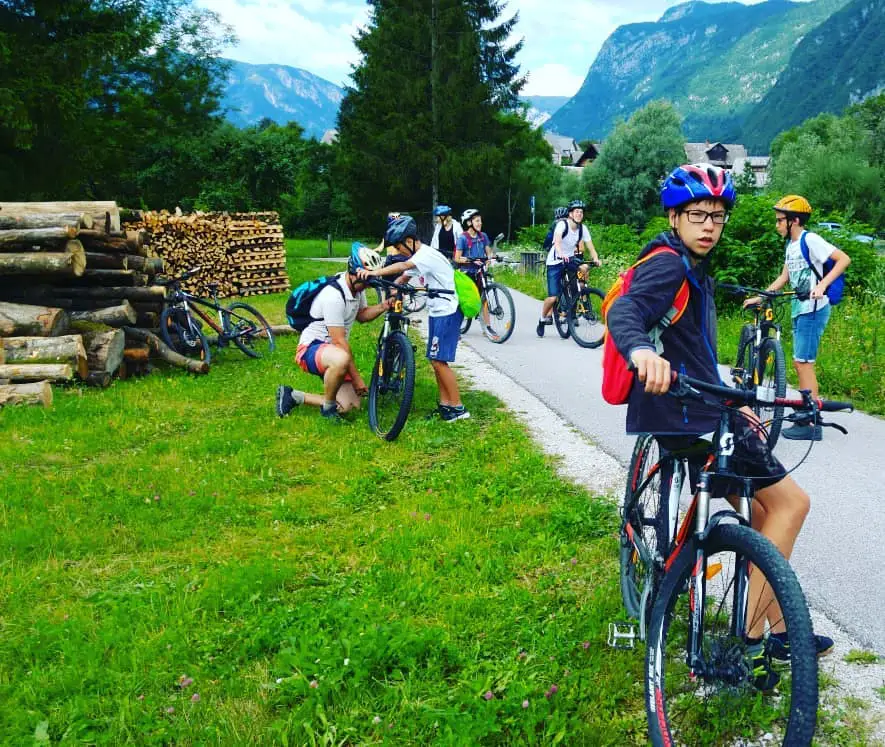
Photo: Explorer Kids Camp
You mentioned campers come to Slovenia from all around the world. What are their impressions of the country?
It’s safe to say that they really love Slovenia, and our camps, when you take into account that nearly 80% of our campers come back every year. Without doubt they’re impressed by the beauty of Slovenia as the nature around Lake Bohinj, our previous location, really is something else. I think it’s also the fact that they experience the outdoors rather than just observe it which creates and even more special bond between the campers and nature here. Whether it be on the water in canoes or kayaks, hiking in the mountains, riding horses through forests, or flying through the air they are always challenged to step out of their comfort zones while being totally in nature.
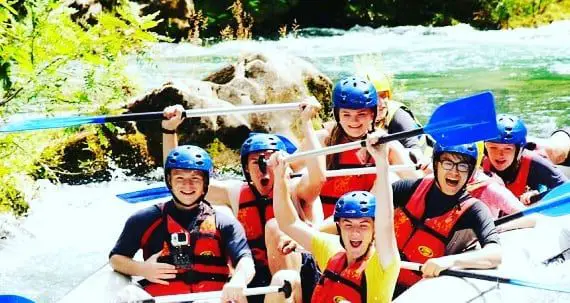
Photo: Explorer Kids Camp
As you pointed out, campers come away with life-long memories. What are some of your best moments from camp?
Over the years there have been so many magnificent memories, if I’m honest it’s quite difficult to pin point one. Quite often campers come to us lacking in self-confidence, self-belief, and generally feeling negatively about themselves, so it’s extremely rewarding seeing them grow in stature leaving happy and more in love with who they are, rather than who they’re told to be. The feeling of staying in touch with these campers year after year and seeing them grow as human beings is unbelievably satisfying, especially on those occasions those campers come up and thank us for all we did with them.
A supportive environment gives children the confidence to grow
In saying this, perhaps the most memorable moment came from my very first camp in Slovenia, as it set the tone for the next 15 years, and also became the cornerstone for Explorer Camps. A young camper was in need, but was at a loss at how to express himself or to get others to understand his pain. By taking the time to listen, the staff helped him find his voice and show his emotions, not only for the first time at camp, but also at that time in his life, which resulted in him not only enjoying the camp but also being more relaxed and happy at home. His parents were extremely grateful to us for making this difference, and as a result this empathy and care shown towards campers forms an integral part of our camp philosophy. We aim to make a difference to every camper’s life.
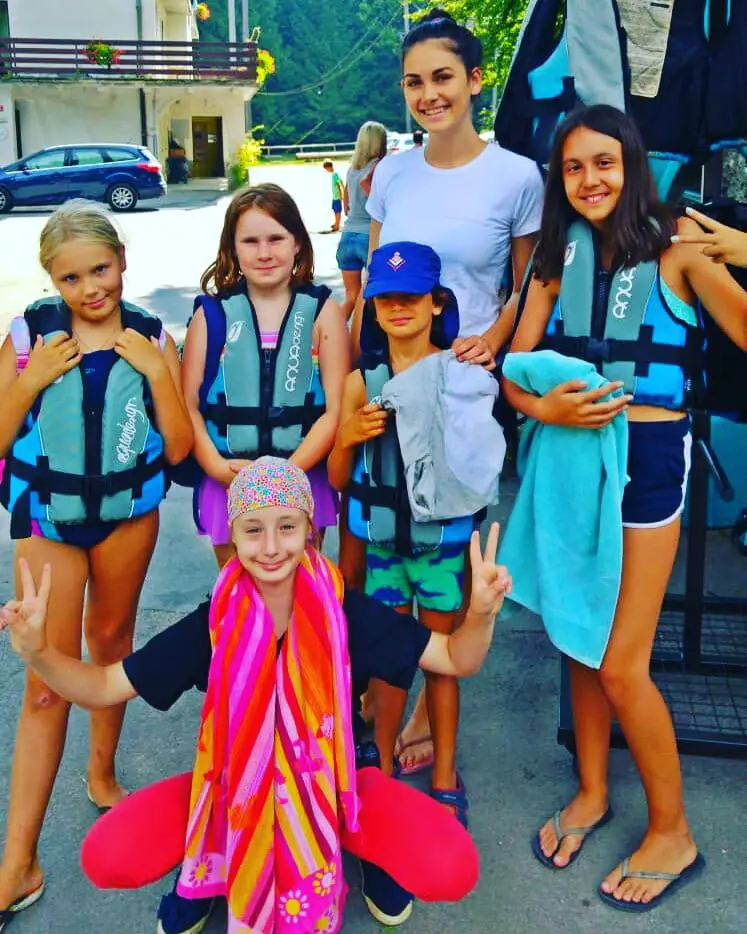
Photo: Explorer Kids Camp
Do you think there’s a place for summer camps in Slovenia and Europe in the future?
It’s a funny question if I’m honest, as I believe camps will always have a place in Slovenia and Europe. However, a lot needs to be done to ensure that they reach the extremely high levels set in the US, which I believe should be our goal. Education is more than just the pursuit of IQ, as Emotional Intelligence is a growing force worldwide and becoming increasingly recognized as a true indicator of success. Without doubt we’ll be pushing hard at Explorer Camps to ensure children that come to us walk away not only being happier with themselves, but also understand more about EQ and its value.
You can read our earlier interview with Steve Hartley here, visit the Explorer Camps website here, follow them on Facebook, or watch more of their videos on YouTube. And if you’d like to share your story about running a business in Slovenia, or about anything else related to the country, then please get in touch at This email address is being protected from spambots. You need JavaScript enabled to view it.
Although climate change seems to be moving the snowline ever higher, forcing many resorts to buy snow machines and push back opening dates, skiing in Slovenia remains a big part of the country’s seasonal tourist offer. And with the skiing, snowboarding, sledding and so on season about to begin, the newspaper Finance has put together an overview of what’s new at Slovenian ski resorts for 2018/19 season. Since this is in Slovene and behind a paywall we’ve put together the main points below, as the slopes get ready for their first customers in the next few weeks, weather permitting. On that point, note that the last day for pre-season discounts at most places is November 30, so act now if you want one of those.
RTC Krvavec is set to open on Friday, November 30, and for this year the centre has worked to increase skier safety, with more fences and other protective equipment, as well as enhance the resort’s entertainment programme. Looking to the future, Krvavec will add a wellness centre, swimming pool, glamping area and bungalows. Website
Related: Krvavec - skiing just outside of Ljubljana
Cerkno, now under the majority ownership of Postojna Cave, is aiming to open December 1, and this year visitors will see more activities on offer for children and families, as well as the resort now being a pet-friendly one. Website
Golte will officially open on December 8, and this year the centre has new apartments for guests to stay in. Website
Vogel, a rare mountain resort that sees more visitors in summer than winter, plans to open the slopes on December 15. The site’s capacity is up this year due to the new ski-lift that’s been installed, while further work is being done on the resort’s restaurants. Website
Maribor’s closest resort, Maribor Pohorje, is scheduled to open on December 14, and earlier if the weather brings snow. If not, the resort has invested in new snow cannons and snow-making equipment to keep the slopes white, and has also added a new toboggan run. Further improvements in the near future are a new chairlift system. Website
The season is expected to start on December 19 at Rogla, with this year’s innovations being the renovated Rogla Hotel, a covered conveyor belt, an a parking area with space for up to 40 motorhomes. Website
Kranjska Gora is also opening on December 19, and this season the resort will have new snow cannons and a new ski lift. Attempts to build a gondola to the top of Vitranc are still on hold until a building permit is obtained. Website
Related: Winter in Kranjska Gora
Kanin/Sella Nevea, the highest ski resort in Slovenia, and one that goes over into Italy, will open with the first major snowfall, and at the time of writing had already received around 60cm on the upper slopes. When the place does open, with skiers advised to check the website for news, there will be renovated cable cars to take people to the top. Website




